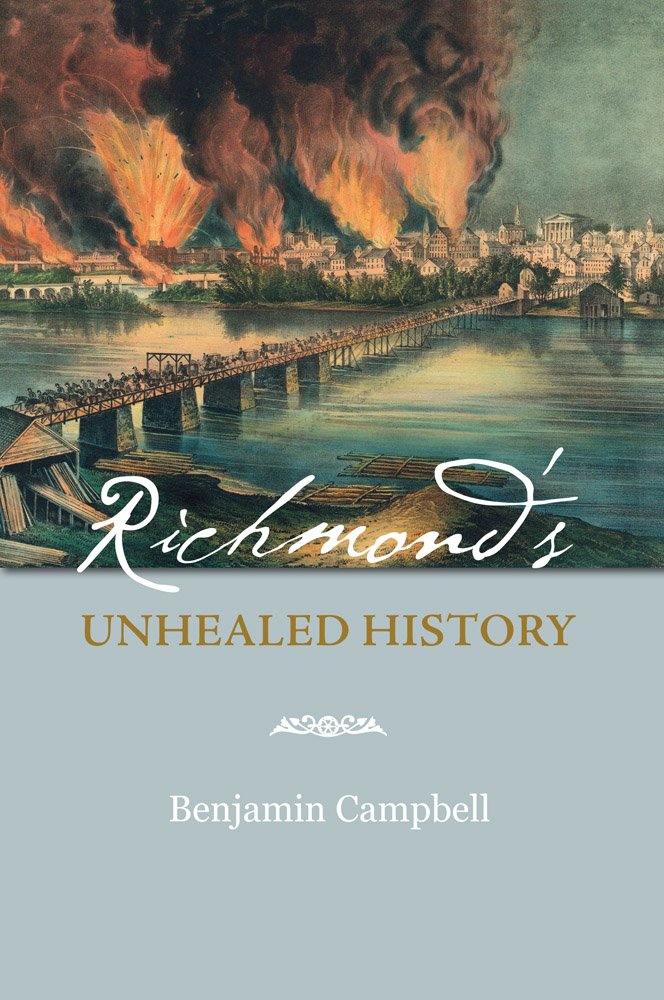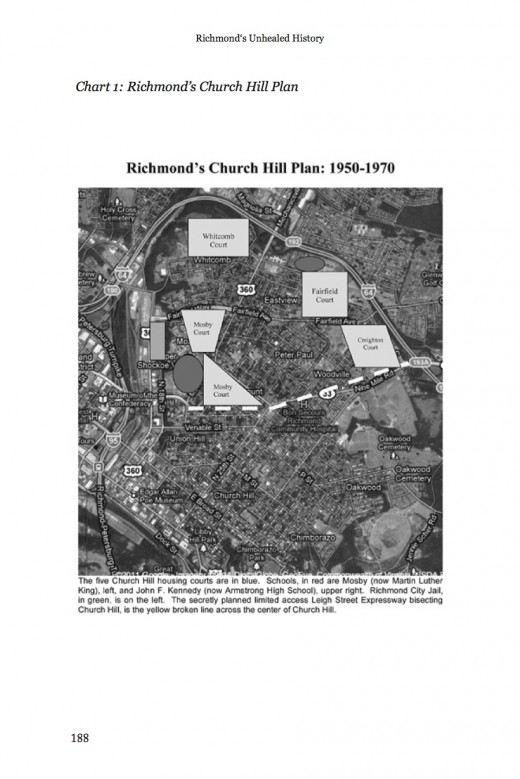RECENT COMMENTS

Richmond’s Unhealed History
Brandylane is proud to announce the release of Richmond’s Unhealed History by the Rev. Benjamin P. Campbell, a Rhodes Scholar and Episcopalian priest. In many ways, Richmond, Virginia is a microcosm of America’s history and current political economic situation, making this work of paramount relevance to citizens of all stripes, everywhere.
Rev. Campbell examines the contradictions and crises that have formed Richmond over more than four centuries (PDF), from before Columbus to the current era. Centered on ideas of spiritual and social justice, Rev. Campbell believes the people of Richmond can prove to the world that race and class can be conquered by the deliberate and prayerful intention of honest and dedicated citizens.
I’ve skimmed a preview copy of this and I’m really looking forward to having the time to really dig into it. Rev.Campbell’s voice and perspective is a welcome addition to the ever-growing pantheon of RVA-centric books.
Here is a piece from the book that explains one of the small mysteries of the neighborhood
In the mid-1970’s, the Church Hill Area Revitalization Team (CHART), a community group in Church Hill, uncovered a long- standing joint city-state plan to demolish the remaining center of Jackson Ward and the center of Church Hill for a new, six-lane divided highway which would connect Eastern Henrico with the western portion of the city. The city had announced that it was involving Church Hill residents in the design of a new bridge across Shockoe Valley to replace the two-lane Marshall Street viaduct, used extensively by pedestrians, and connect Church Hill to Jackson Ward. Residents were surprised when they discovered that the neighborhood bridge they had thought they helped to plan was actually a six-lane facility designed for higher speed traffic. Strangely, the bridge ended in Church Hill in a confused network of narrow cobblestone streets. On the other end, once it passed the coliseum in a six-lane, bi-level configuration, it ended suddenly in the relatively narrow passage of Leigh Street through what had been the center of black life in Richmond: the hotels, the churches, funeral homes, schools, and Maggie Walker’s House.
CHART, led by community activist James Elam, discovered the bridge was actually the centerpiece of yet another downtown by-pass planned by state legislators and the Virginia Department of Highways. On its west end, the road was designed to travel through the Leigh Street Corridor, demolishing the historic buildings on at least one side of the street and dissecting the fragment that remained of the once- vital center of Jackson Ward. On the other end, it would cut through a neighborhood of single family homes in the center of Church Hill, creating a wide barrier of traffic and concrete separating all of the newly erected public housing projects from the revitalizing historic district to the south. Richmond’s five major public housing projects would thus be completely fenced in by limited access superhighways.







Finally! Someone did the research and wrote down what I’ve been getting thru oral history for years.
But I didn’t know till now that the over-built MLK bridge was just part of a much larger, totally horrific example of “urban planning” run amok.
Thanks go to James Elam for his bravery and dedication for preserving our historic neighborhoods. And thanks to Rev. Campbell for writing this book.
Wow. That is VERY interesting, and I’m glad it fell through.
Wow, very interesting! Maybe the City’s efforts to make the MLK bridge more pedestrian and bicycle friendly (http://chpn.net/news/2011/10/23/council-to-consider-martin-luther-king-pedestrian-and-bicycle-improvement-project_19811/) will help make some minor amends by creating a more friendly, safe space for all travelers rather than a speed way for cars. Sounds like an interesting book.
I imagine it will be available at Fountain Bookstore in Shockoe Slip. They usually have a pretty good collection of books about Richmond and by Richmond authors.
By the way, if you get a chance, check out the new anthology of scary stories by Richmond area authors called “Richmond Macabre”. It is a fun read and Church Hill appears as a setting in several of the stories (I always try to figure out if the authors are using an actual house or park setting on the Hill that I am familiar with, but I think the authors’ creative licenses has made this a futile effort).
While I am on the subject, Church Hill also appears as the setting in a couple of the stories in Richmond Noir, also a fun read set in Richmond and written by area authors. I bought both at Fountain Bookstore. Gotta’ support our local businesses!!
Brad #3, thanks for the suggestion. I just called Fountain Books and they have it. It’s $15.95, making it really affordable, too!
Ben Campbell also teaches a series at least once a year at Richmond Hill based on the research that he used for the book. It is also called Richmond’s Unhealed History. I highly recommend the class and look forward to reading the book.